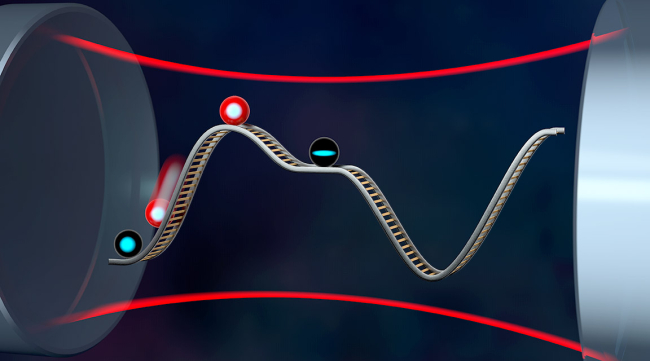Squeezing multilevel atoms in dark states via cavity superradiance
| Author | |
|---|---|
| Abstract |
We describe a method to create and store scalable and long-lived entangled spin-squeezed states within a manifold of many-body cavity dark states using collective emission of light from multilevel atoms inside an optical cavity. We show that the system can be tuned to generate squeezing in a dark state where it will be immune to superradiance. We also show more generically that squeezing can be generated using a combination of superradiance and coherent driving in a bright state, and subsequently be transferred via single-particle rotations to a dark state where squeezing can be stored. |
| Year of Publication |
2024
|
| Date Published |
2024-01
|
| Journal Title |
Phys. Rev. Lett.
|
| Volume |
132
|
| Start Page or Article ID |
033601
|
|
PhysRevLett.132.033601.pdf1.01 MB
|
|
| DOI | |
| URL | |
| Download citation | |
| JILA PI | |
| Related JILA Highlights | |
| Associated Institutes | |
Journal Article
|
|
| Publication Status | |
| Publication Image |

|


 The Physics Frontiers Centers (PFC) program supports university-based centers and institutes where the collective efforts of a larger group of individuals can enable transformational advances in the most promising research areas. The program is designed to foster major breakthroughs at the intellectual frontiers of physics by providing needed resources such as combinations of talents, skills, disciplines, and/or specialized infrastructure, not usually available to individual investigators or small groups, in an environment in which the collective efforts of the larger group can be shown to be seminal to promoting significant progress in the science and the education of students. PFCs also include creative, substantive activities aimed at enhancing education, broadening participation of traditionally underrepresented groups, and outreach to the scientific community and general public.
The Physics Frontiers Centers (PFC) program supports university-based centers and institutes where the collective efforts of a larger group of individuals can enable transformational advances in the most promising research areas. The program is designed to foster major breakthroughs at the intellectual frontiers of physics by providing needed resources such as combinations of talents, skills, disciplines, and/or specialized infrastructure, not usually available to individual investigators or small groups, in an environment in which the collective efforts of the larger group can be shown to be seminal to promoting significant progress in the science and the education of students. PFCs also include creative, substantive activities aimed at enhancing education, broadening participation of traditionally underrepresented groups, and outreach to the scientific community and general public.